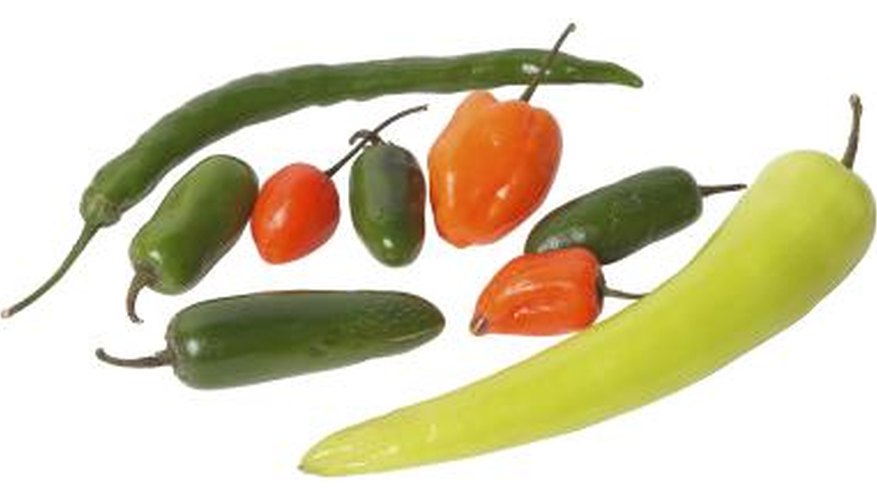Plants grown hydroponically tend to do very well, typically growing much more quickly than do the same plants when grown in a conventional garden. There are many different kinds of peppers, and any of them can be grown successfully in a hydroponic garden. Some of the larger plants may need extra support, but as a general rule, if the plant doesn't need support for its branches when planted in soil, it won't need it in a hydroponic system, even though peppers tend to grow much faster when grown hydroponically.
Hydroponic Culture
Peppers can be grown in a number of different types of hydroponic systems. Two of these systems are commonly used to grow peppers. In the first, seedlings are placed in bags of inert media, such as perlite, and continually fed with a drip-irrigation system that provides essential nutrients to the plants. Another method in frequent use is a deep-water-culture (DWC) system. In this system, plants are suspended over a pool of liquid nutrients, and the roots are continually submerged. Oxygen is pumped through the system on an ongoing basis, so that the plants' roots do not become waterlogged to the point that the plants die.
- Peppers can be grown in a number of different types of hydroponic systems.
- In the first, seedlings are placed in bags of inert media, such as perlite, and continually fed with a drip-irrigation system that provides essential nutrients to the plants.
Soil Culture
Pepper plants grown in the soil must develop their root systems to seek out necessary nutrition from the soil. Pests are often a greater problem, especially those pests that live in the soil, such as grubs and moles. Conventionally grown peppers need a relatively large amount of space for growth, so that they are able to find enough nutrients to support them. Since much of their energy is devoted to survival, plants grown in the soil take longer to grow than those grown hydroponically.
- Pepper plants grown in the soil must develop their root systems to seek out necessary nutrition from the soil.
- Since much of their energy is devoted to survival, plants grown in the soil take longer to grow than those grown hydroponically.
Benefits of Hydroponics
Plants that are grown hydroponically gain several benefits over those grown in the soil. It is common to control all important aspects of the environment in hydroponic systems, including light and temperature. Due to this, plants not only gain the benefits of having nutrients delivered directly to them, they also are provided with optimum growing conditions such as extended growing days and ideal temperatures. Plants can be spaced about 1/2 the distance recommended for soil-based peppers, since they do not need to develop widespread root systems to find nutrients.
- Plants that are grown hydroponically gain several benefits over those grown in the soil.
- It is common to control all important aspects of the environment in hydroponic systems, including light and temperature.
Growing Times
There are many different types of peppers, and each one has its own rate of growth and development. Bell peppers, for example, take around 70 days to reach maturity, and red chilli peppers can take as long as 84 days. As a general rule, when plants are grown hydroponically, they are ready for harvest as much as 25 per cent sooner than those grown in soil. This means that bell peppers can be harvested in about 52 days, and red chilli peppers are ready after 63 days.
- There are many different types of peppers, and each one has its own rate of growth and development.
- As a general rule, when plants are grown hydroponically, they are ready for harvest as much as 25 per cent sooner than those grown in soil.
